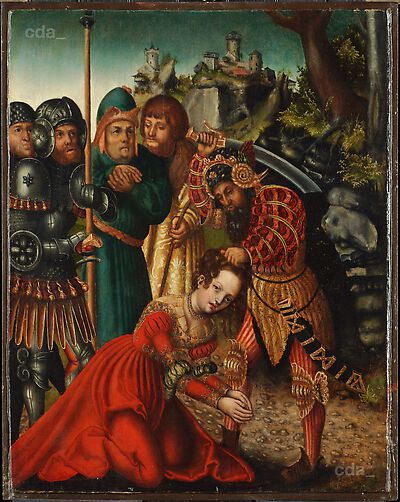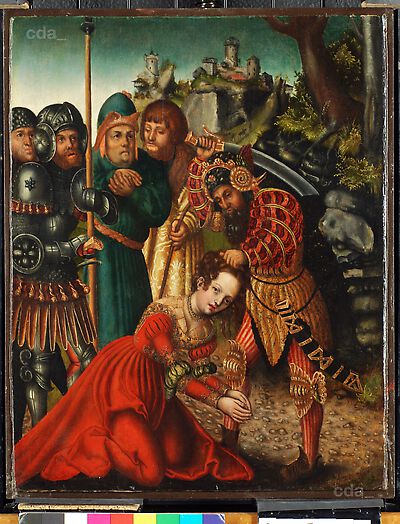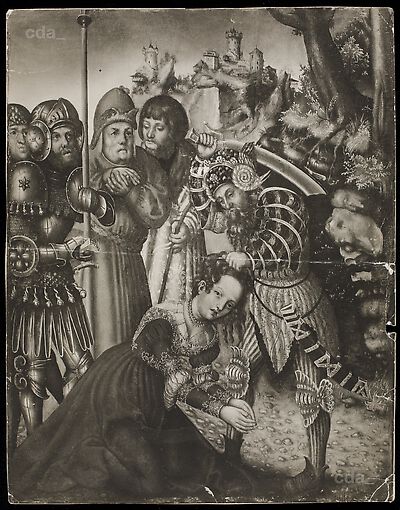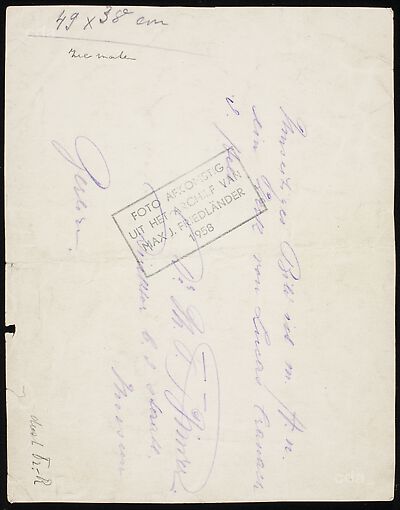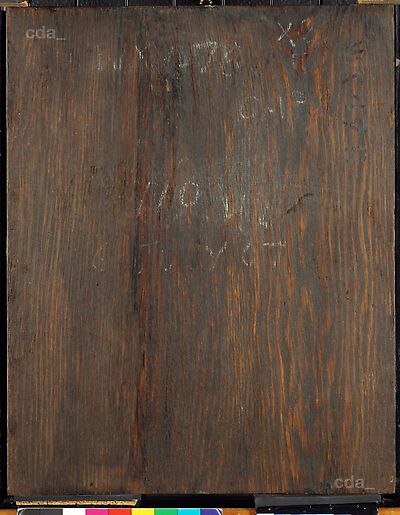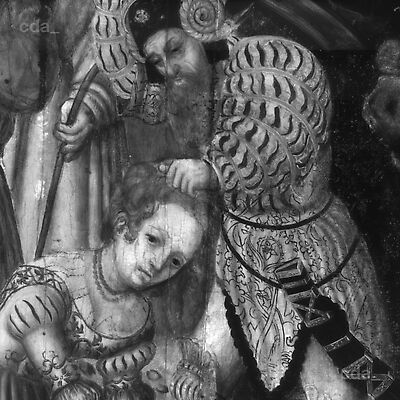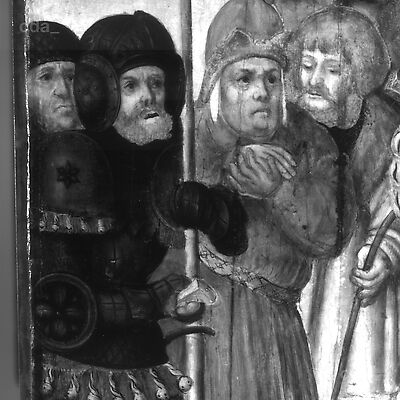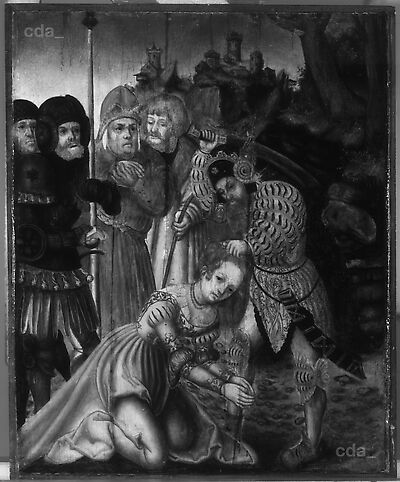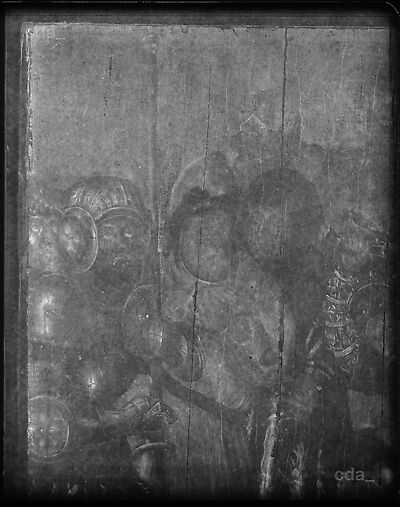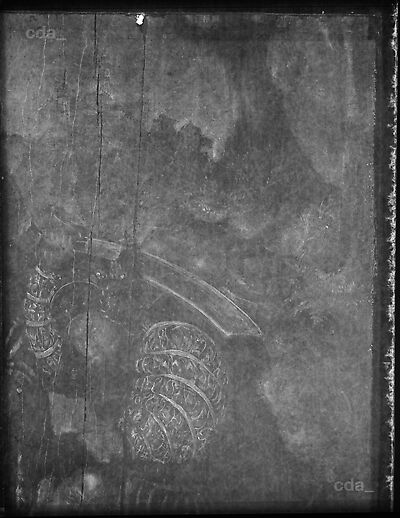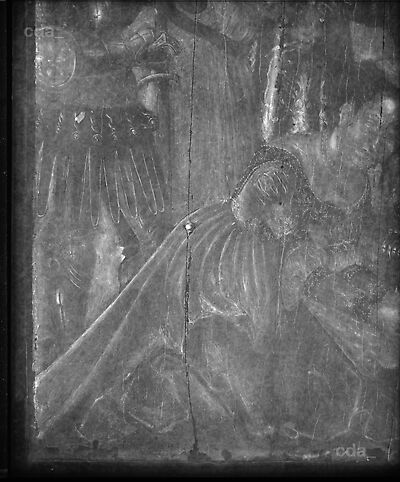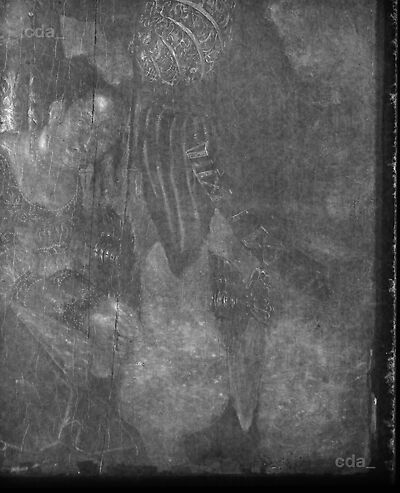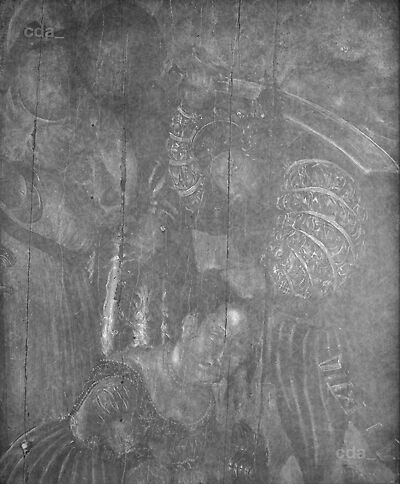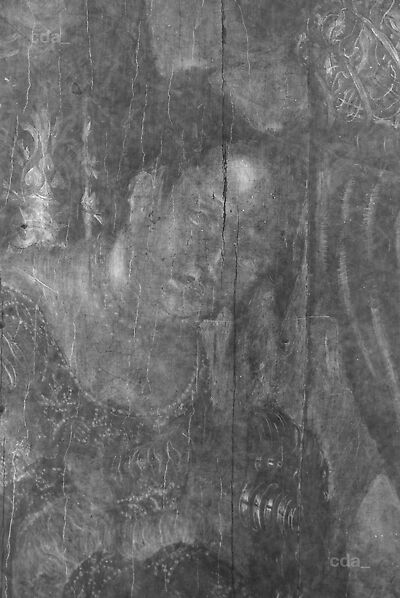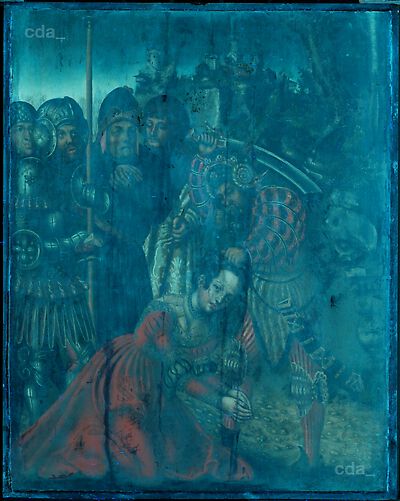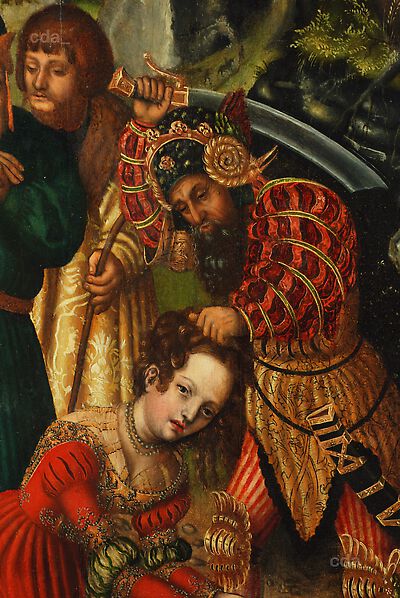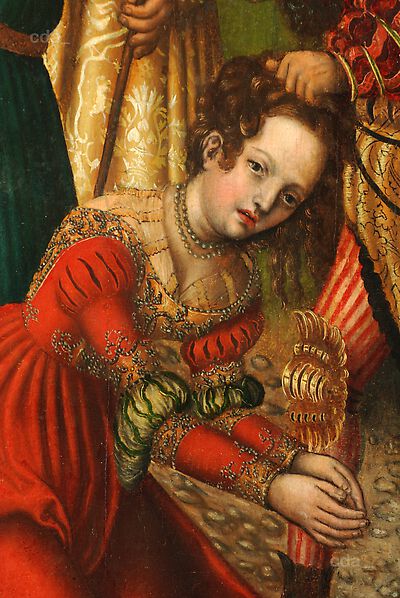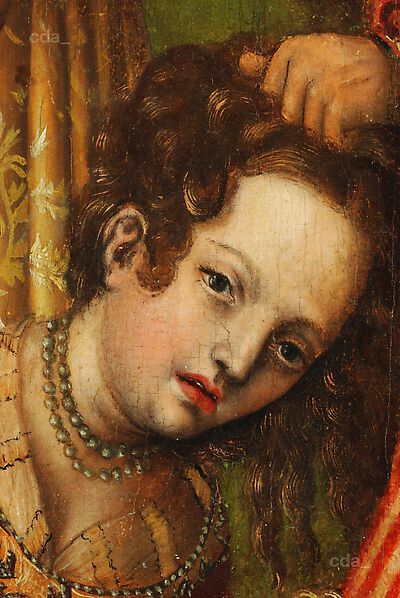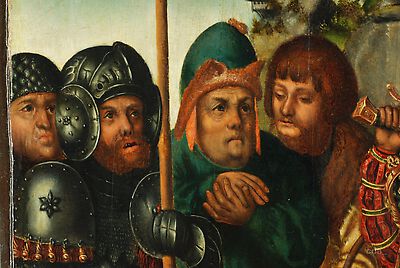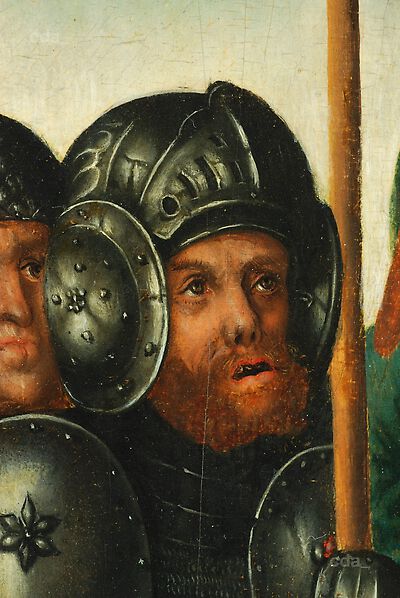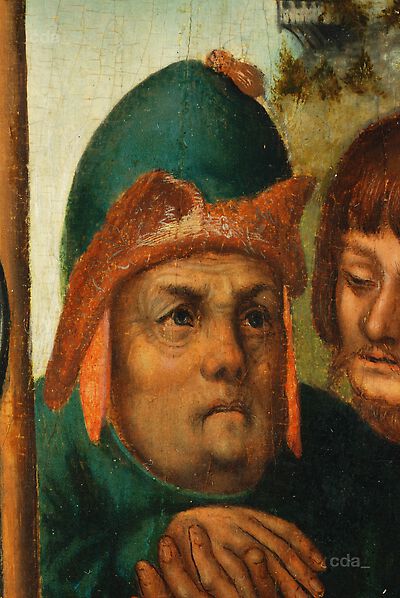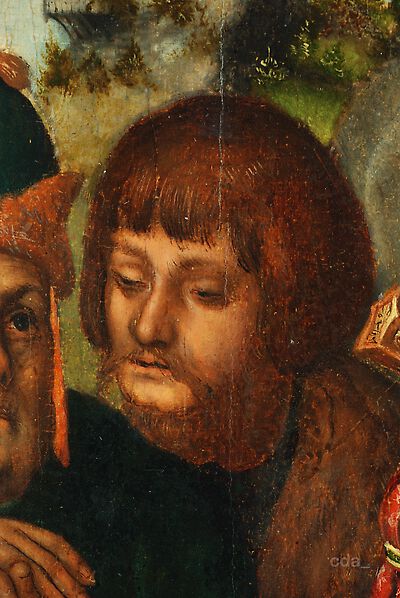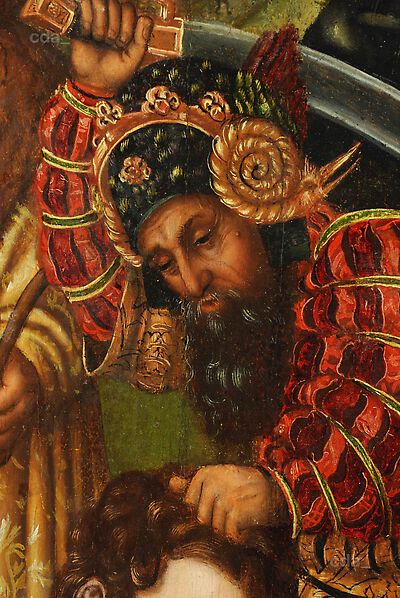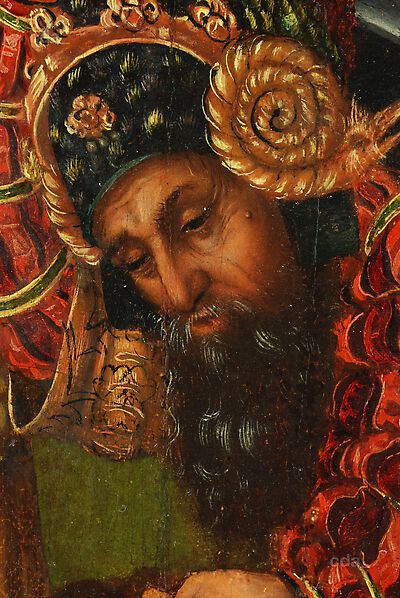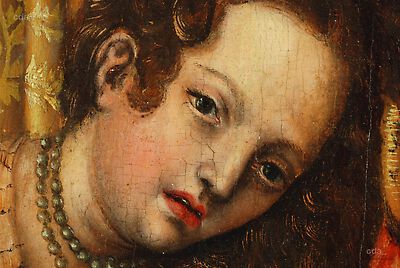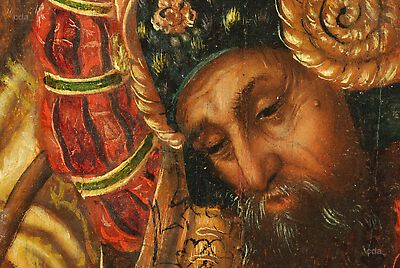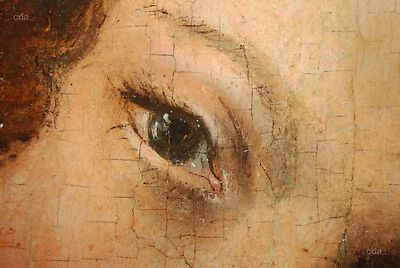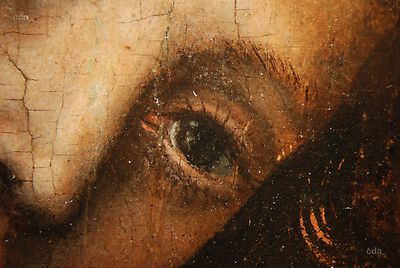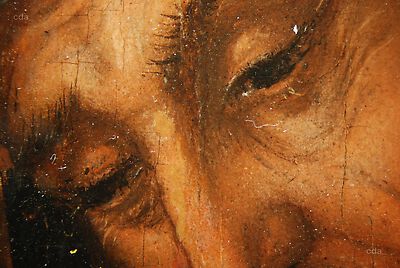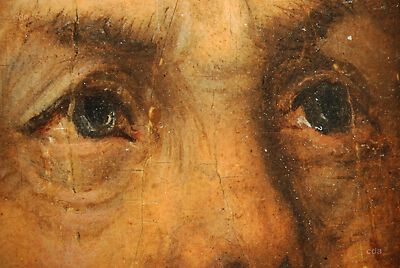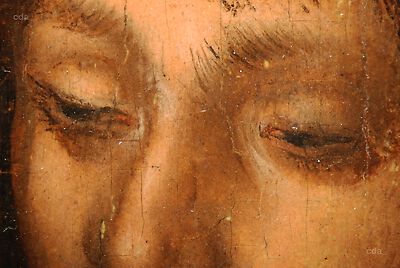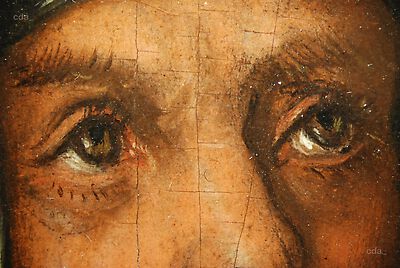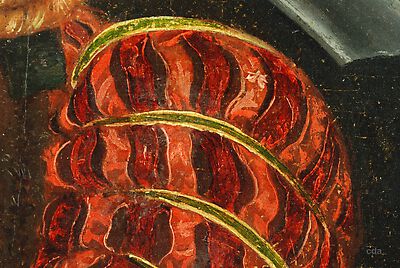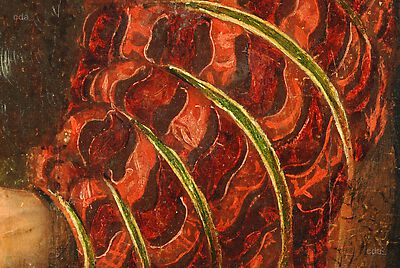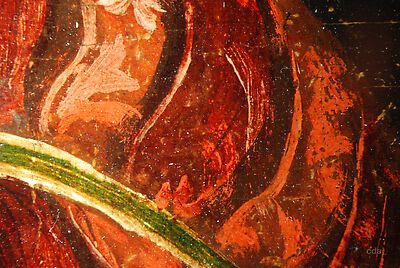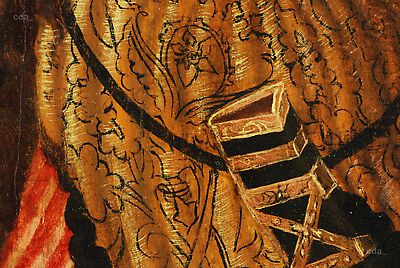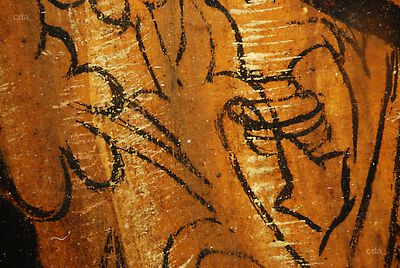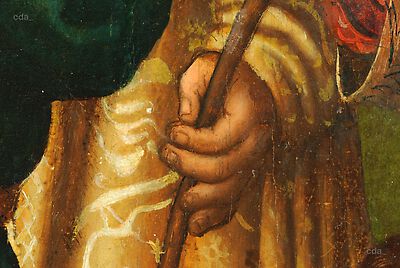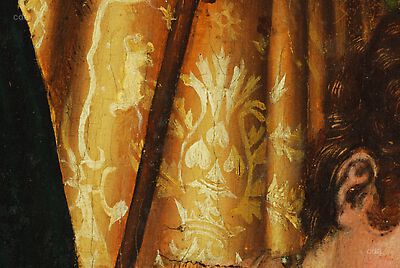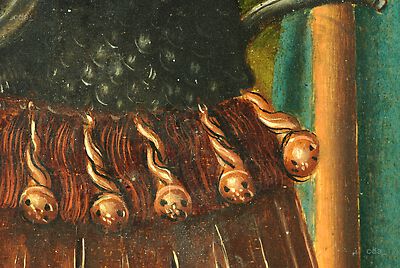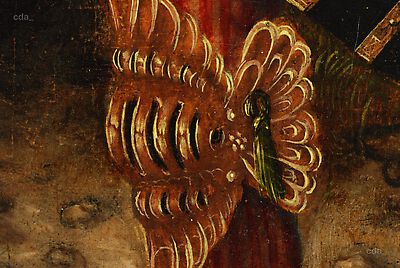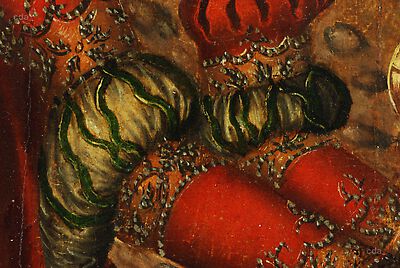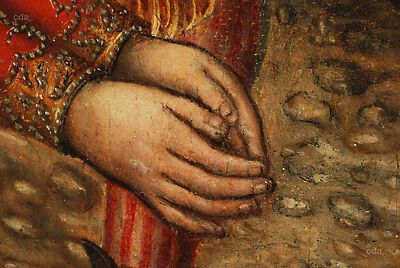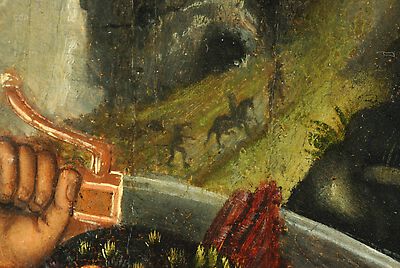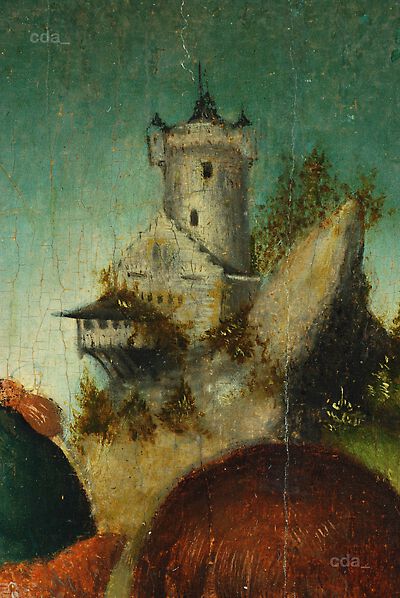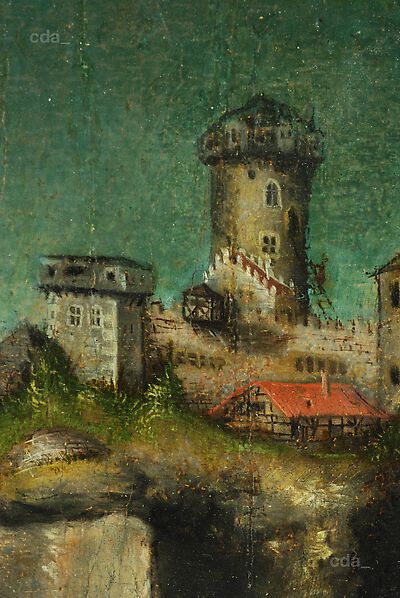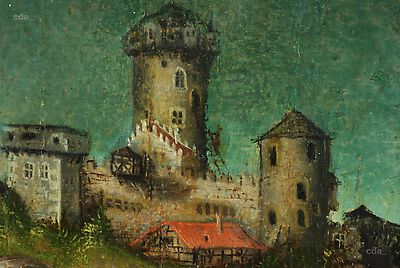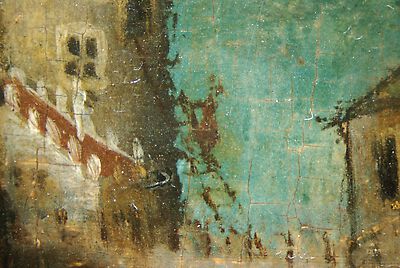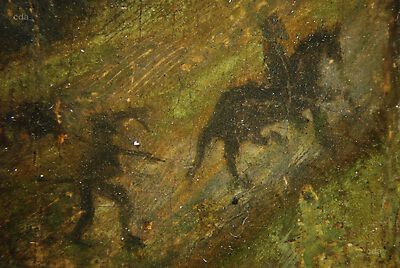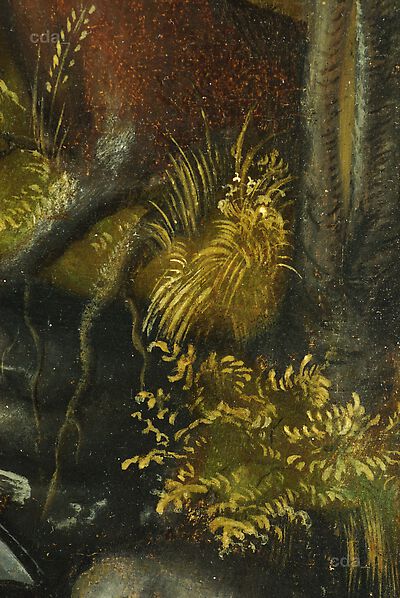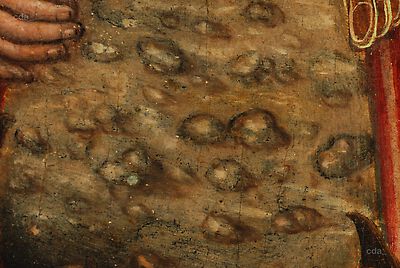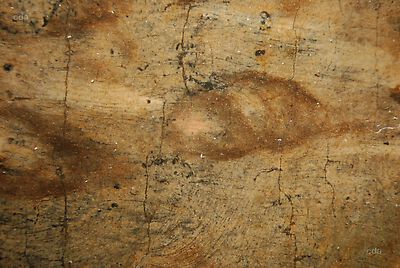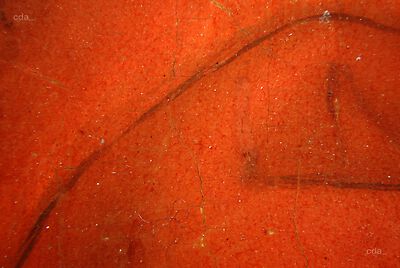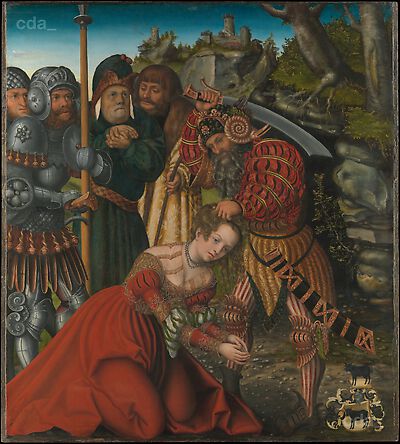Support
The original painting support consists of a single wide board. It was not possible to determine the wood species as the panel has been thinned to less than two millimetres thickness and glued to a new panel (approx. 12 mm) at a later time. Within this process the original edges of the panel were cut but the painted surface (approx. 47.3 x 37.4 cm) seems not to have been altered significantly. There are several old splits in the original support, which may have been the reason for the transfer of the panel to the new support.
[Heydenreich, examination report 2009, 2]
Ground and Imprimatura
The panel was prepared with a substantial white ground in which fine cracks occurred before the painting process had begun. The cracks appear in X-radiographs as thin white lines as these are filled with X-ray absorbent paint. An overall application of an intermediate layer (imprimatura), containing lead white may have contributed to increasing the visibility of the fine cracks in the x-radiograph.
[Heydenreich, examination report 2009, 3]
Underdrawing
With the help of Infrared-reflectogaphy it was possible to partially disclose the preliminary underdrawing, which was executed with a quill pen and diluted black ink. Outlines and volumes are given with a few impulsive curved strokes and shadows are rarely indicated by hatching. There are no changes detectable in this free-hand drawing.
The underdrawing delineates individual forms without conclusively determining the borders for the application of the paint. For example, the middle and ring fingers of the right hand of the assistant figure dressed in blue were drawn shorter than in the final painted version. Also, the bent knob below the right hand of the soldier was initially drawn more curved than the painted version. Interestingly, these and other details of the underdrawing seem to reflect precisely the Metropolitan painting where the fingers are painted shorter and the knob is more bent. This observation supports the assumption that the examined painting was probably painted after the Metropolitan painting or that it copied another version, that has not survived. By comparison, the painting in the Götzschel Collection depicts the knob and the fingers exactly as painted on the present panel. This may be an indication that the Götzschel painting is a copy, which was produced after the present panel.
[Heydenreich, examination report 2009, 4]
Paint Layers and Gilding
The painting process began with a greyish undermodelling of the sky, parts of the landscape, the blue garment of the witness, the armour of the soldier, the leg dress of Dioscorus and some other parts of the picture. The grey paint is a mixture of lead white and plant black.
Subsequently the sky and the garments were worked up using a stippling technique employing a blue pigment (probably azurite) at times mixed with white and black.
The initial layer of Saint Barbara's dress was painted using an opaque red pigment and black before the modulation of the folds were executed with a translucent layer of red lake and a few dark contour lines. The brocade pattern on Dioscorus’ dagged sleeves was initially laid in with little attention to detail; it crosses individual forms and therefore had to be partly reworked in red paint and a translucent lake. The folds on the skirt were modelled with different shades of brown paint (probably an earth pigment) and subsequently accentuated with yellow lines that imitate the metal threads of brocade. The yellow pigment is probably lead-tin yellow as there are translucent inclusions (lead soaps?) visible under higher magnification, which are frequently associated with this pigment. Finally, the black brocade pattern was drawn freehand with a pointed brush, but with little confidence and sophistication. The pattern may have been copied from the model painting with some variation. However, as the same pattern was also used on other Cranach paintings, such as the panel with the Virgin and Child and Saints (FR 36, c. 1510-12) it seems also possible that the painter copied it directly from a workshop pattern.
The faces were undermodelled with a light flesh paint (lead white, vermillion? and traces of azurite?), which was gradually toned to form volumes. Subsequently, shadows were created with greyish and brownish shading. Finally, the painter worked up the facial features with touches of dark brown and light flesh paint applied with a pointed brush. The X-radiograph demonstrates that the modelling was achieved in a few layers and without significant changes, probably within a relatively short period. A final application of short lines define contours, single hairs and eye lashes and are in comparison with other paintings by Cranach executed with relatively little routine. Some contour lines have been painted twice to match the final form and the eyelashes of Saint Barbara’s right eye were also reworked and corrected.
The foliage in the background was modelled on grey underpainting with green and almost yellow leaves (probably lead-tin yellow) which were subsequently toned with a translucent green glaze. The moss on the roots of the tree was depicted using a stippling application of grey paint. There are hardly any changes detectable within the painting process. The dark shadows on the pebble stone ground of the Metropolitan painting were apparently also intended on the present panel. However, the dark undermodelling was covered with lighter paint during a later stage of production.
The painting process as well as many details suggests that the painting is after pre-existing model, which may have been the painting in New York or another no longer existing version. Only a few of the finest details, such as Barbara’s halo and the birds near the left tower in the background are missing on the smaller version. The possibility to compare the pictorial qualities of the Metropolitan painting and the examined work is limited as both panels differ significantly in size.
[Heydenreich, examination report 2009, 4-5]
- examined by Gunnar Heydenreich
